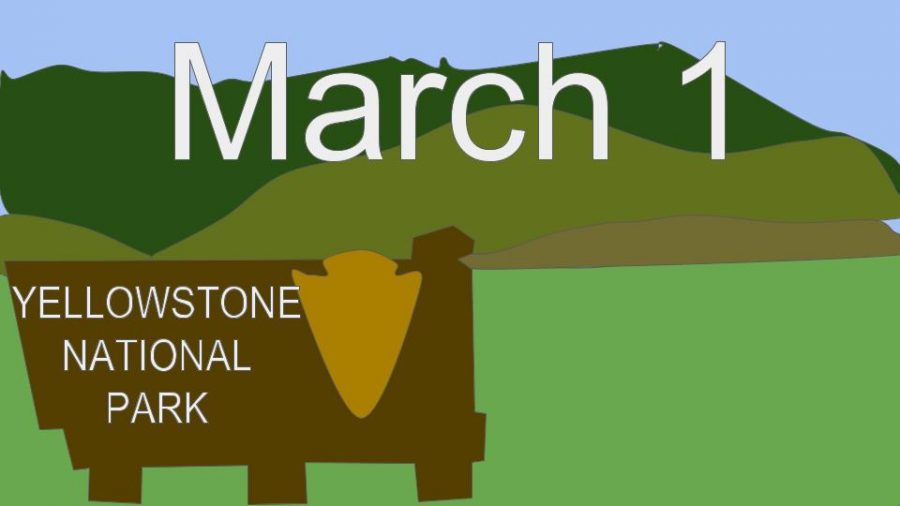This Day in History – March 1st
March 1, 2018
On this day in 1872, Yellowstone was established as the first national park by President Grant.
Before the first Anglo explorers arrived in the Yellowstone region, Native Americans had been living and hunting there for hundreds of years. Trees, mountains, and streams with fish attracted them to the region, though the awe-inspiring geysers, canyons, and gurgling mud pots enthralled them as well.
John Colter was a famous mountain man; he was the first Anglo explorer to travel through the Yellowstone area. After journeying with Lewis and Clark to the Pacific, Colter joined a party of fur trappers to explore the wilderness. In 1807, he explored part of the Yellowstone plateau and returned with extraordinary stories of steaming geysers and bubbling cauldrons. Some skeptics accused the mountain man of telling tall tales and lying to get fame, which was not the case.
Before the Civil War, only a small amount of trappers and hunters explored the area, so it remained largely a mystery. In 1869, the Folsom-Cook expedition made the first official exploration, followed a year later by a much more thorough exploration by the Washburn-Langford-Doane expedition. The key to Yellowstone’s future as a national park, though, was the 1871 exploration under the direction of the government geologist Ferdinand Hayden. Hayden brought along William Jackson, a pioneering photographer, and Thomas Moran, a brilliant landscape artist, to make a visual presentation of the expedition. Their images provided the first visual proof of Yellowstone’s wonders and caught the attention of the U.S. Congress.
Early in 1872, Congress moved to set aside roughly 1 million acres of public land, making the future states of Wyoming, Montana, and Idaho America’s first national park. President Grant signed the bill into law on March 1 in 1872. The Yellowstone Act of 1872 appointed the region as a public “pleasuring-ground,” which would be preserved “from injury or spoliation, of all timber, mineral deposits, natural curiosities, or wonders within.”
For a nation set on settling in and exploring the West, the creation of Yellowstone was surprising. Many congressmen gave it their support simply because they believed the rugged and isolated region was of little economic value. Yet, the Yellowstone Act of 1872 popularized the idea of preserving sections of the public domain for use as public parks. Congress went on to designate dozens of other national parks, and the idea spread to other nations around the world.





